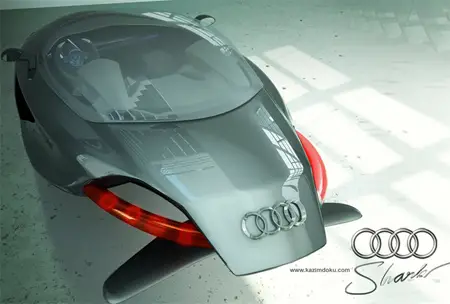
MIT believes they have come up with an eco-friendly solution to the 'last mile' problem. The 'last mile' refers to the distance you have to walk between your subway stop and your actual destination (i.e. home, work). The idea is to have a network of these small, electric cars stacked outside mass transit systems so commuters can grab them as needed. Instead of an engine they'll have four in-wheel electric motors run by lithium-ion batteries, saving a reasonable amount of space so the cars can be made extra small. They'll have 360 degrees of steering, so you can park the little bastards sideways in spots and maneuver into other small spaces. I'm not sure if something similar with bicycles or electric scooters has ever been attempted, but that may be a consideration as well. Good job MIT, except I invented stackable cars a year ago. And by 'invented stackable cars' I mean 'started a twelve car pile up during rush hour.'
By geekologie
Holographic Laser Projection – or HLP™ – is a revolution in display technology. The term holographic refers to the inventive method we use to create 2D images.
Using holographic algorithms, we transform the image we want to project into sets of diffraction patterns, which are shown on a tiny microdisplay. When laser light illuminates the microdisplay, the projected image is formed by diffraction.
Diffraction patterns are highly efficient. Instead of blocking light, they steer light to exactly where it is needed and away from where it is not. Calculating the diffraction pattern for each high quality image would be too computationally intensive, so we’ve created a more elegant solution.
We calculate multiple patterns, each of which forms a rough version of the image. When viewed in rapid succession, the eye evens out the noise and perceives a single, clearly defined image. So you get efficient, high quality video in real time.
Using lasers means colours appear rich and vivid, and the image is always in focus. HLP™ technology also projects perfectly onto curved surfaces. Its uniquely wide throw angle creates large images very close to the projector. And HLP™ has a class 1 laser safety classification, making it completely eye safe.
These features enable us to integrate infrared sensing technology and create an interactive projector that instantly transforms any flat surface into a touch screen.








